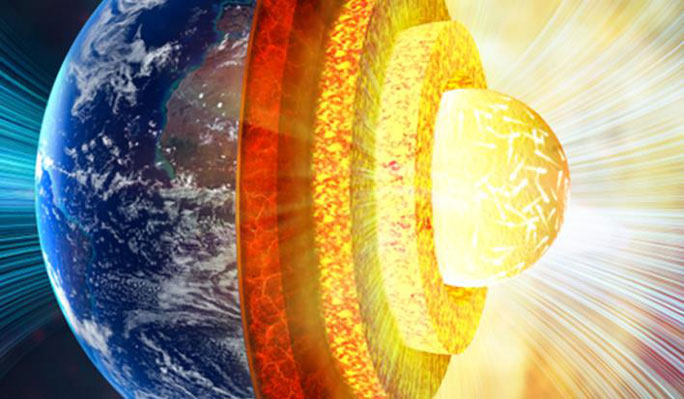Matter exists in four states: solid, liquid, gas, and plasma, but this definition may need to be reconsidered. There is a type of matter that exists in a state between solid and liquid that forms the heart of the Earth.
According to Science Alert, since the 1930s, scientists have provided indirect evidence suggesting that the Earth’s core is a solid sphere. Since then, the structure of an inner solid core and an outer liquid core has been widely accepted.
However, there is also seismic wave data indicating that the inner core is very soft. This inconsistency may be due to the fact that our planet’s core is a type of matter that does not exist on the surface, neither solid nor liquid.

The Earth consists of multiple layers, with the innermost core possibly being a fascinating “supermatter”.
This is what research led by Dr. Yu He from the Chinese Academy of Sciences has revealed. This study asserts that the Earth’s core is a form of “superionic matter”, a state previously thought to exist in water and ice on other planets.
However, the superionic matter in the Earth’s core is entirely different; it is made from an alloy of iron with carbon, hydrogen, and oxygen, existing in a peculiar state between solid and liquid. This explains why seismic data—primarily relied upon by scientists to study the deep interior of the planet—sometimes reflects a solid inner core and at other times suggests it must be as flexible as a liquid or soft plastic.
Dr. He and his colleagues used computer simulations to recreate how seismic waves travel through the core to determine what these strange seismic waves we have detected actually pass through.
The recently published study in Nature confirms that while “solid” iron atoms are structured in a crystalline lattice, carbon, hydrogen, and oxygen molecules diffuse through the medium, creating something liquid-like and flexible. This also explains why some surveys suggest that the Earth’s inner core does not appear to be a uniform mass.


















































